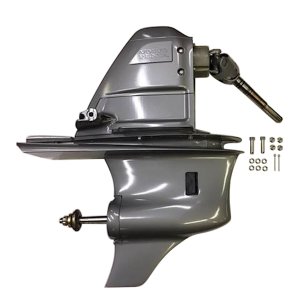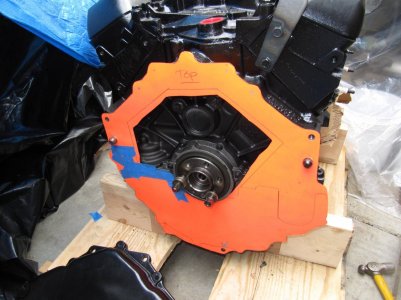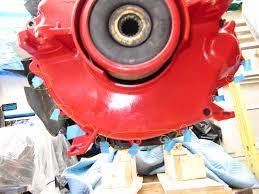The long blocks were sourced right from the manufacturer. As such you have no say in the assembly, they are factory refurbished because that model of 4.3 was out of production!
As for matching up, that came from several suppliers who told me that if I was to buy the new model of 4.3 I would also have to change the outdrive because they didn’t match up.
I’m no mechanic so I tend to take the advice of the professionals None of which were backyard mechanics and had well known and reputable track records. Are you suggesting a 2000 4.3 can be replaced with for example a 2023 4.3 without changing the leg? That was my first choice, but I was told it couldn’t happen!
There would be differences but more in technology rather physical measurements.
The leg has a spline that inserts into a dampener attached to the flywheel. Totally independent from the engine. The size of the spline would likely be the same diameter with maybe a different number of splines but that could be fixed easily by just mounting a correct hub.
When buying a new outdrive they want to know engine type or boat model and hp.
This is a diagrams of an engine and outdrive.
Outdrive;

You can see the spline that slides into hub mounted at the back of the engine

This is the rear, the bolt patterns stay the same, the flywheel and hub bolt to the end of the crankshaft.

This is the rear of the engine with the flywheel housing and damper hub mounted. The spline from the leg slides into the hub. The fly wheel housing is a separate part from the engine and it has the the two mounting bolts that attach to the transom housing which is totally separate from the engine.
Are all Chevy bellhousings the same?
Arguably the most popular and consistent pattern of all time, the Chevy Small Block pattern has remained virtually unchanged since 1955. The LS engines introduced an additional hole at 12 o'clock and added structural oil pan attachments, which for most versions are the same.
Essentially any chev motor that has the same fly wheel housing bolt pattern, which is the same for all older chev type engines, can be mated with the outdrive.
The differences will be horse power, torque and RPM range which may require changing the gear ratio in the leg or changing props but that would require a really big increase in both power and torque. Like if you attached a 8.1 liter chevy engine which BTW has the same flywheel housing bolt pattern.
A 2023 4.3 liter would require much more electrical parts and sensors over the older model due to needing a computer to do a lot of things like timing, fuel injection, anti knock, just a lot of modern stuff that wasn't automatic. Maybe some of the older stuff would not bolt on as easy, throttle, alternator, etc... As far as using the older block, there are still some engine rebuilders that probably rebuilt your refurbished engine, they just ordered and installed it for you, I know one marine guy that did that, quite common. Would a 2023 4.3 been better? No doubt but the outdrive could have been used. What outdrive is on the boat? 270, 280, 290? Dual prop? They all had powerful engines in front of them.
These older boats aren't rockets, you don't need to pass a physics test to work on them, they are just not as profitable. For the most part a boat built and powered in 1960 is the same as in 2020 physically mechanically with just a lot more electronics, computers, sensors and will get a bit better fuel economy. But the physical mechanics are the same.
Engine/Bellhousing - transom plate - outdrive. Outdrive just slides through the transom bearing into the spline of the hub.



